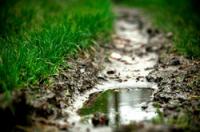Which substances are attracted by the magnet?
Substances that are attracted by magnets are also called ferromagnetic substances. You can count them on one hand. In the following you will find out which substances are ferromagnetic and which properties they have.
1. Magnets and substances that are attracted by them
Only some substances can be attracted or held in place by magnets. Magnets have a north pole and a south pole, which serve as centers of attraction. In order to recognize both poles, they are marked with colors. The North Pole, abbreviated as N, logically points north and is marked in red. The South Pole, abbreviated as S, faces south and is marked in green. There are only three chemical elements that can be attracted to magnets. These are cobalt, iron and nickel. But alloys and mixtures with these three substances are also ferromagnetic.
2. The ferromagnetic substance iron
Iron, also found under Fe in the periodic table of the elements, is attracted by magnets and therefore, like the other two substances, is largely used for electromagnetism. This element was found in 5000 BC. Chr. discovered. It is used in generators, electric motors, and many other devices because of its properties. Above all, however, it serves to shield and guide magnetic fields. The world's largest iron producer and miner is China, followed by Japan and Russia.
3. Cobalt is also attracted to magnets
The element cobalt attracted by magnets was discovered by Georg Brandt. It is an important metal because it is required as an alloy component in many areas. Cobalt materials serve to increase wear and heat resistance. You can find it, for example, in heat-resistant paints, in batteries or in chemical devices. Cobalt is also needed as a trace element in agriculture and medicine. The Congo, Zambia and Australia are leading sponsors.
4. Nickel - often found in coins
The last substance that is attracted to magnets is nickel. You can find the element under the abbreviation Ni in the periodic table. It was discovered by Axel Frederic Cronstedt and is largely funded by Russia, Australia and Canada. Often times, coins were and are made with nickel mixtures.
How helpful do you find this article?

